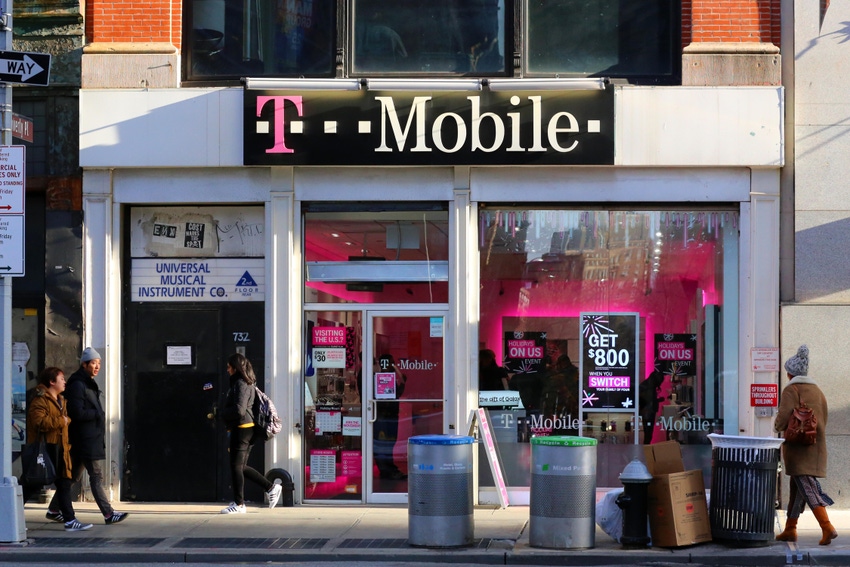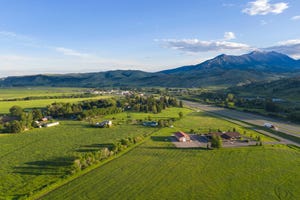Is T-Mobile facing static over its latest 5G spectrum purchase?
The FCC indicated it will review the 'competitive effects' of T-Mobile's 2.5GHz spectrum winnings from Auction 108 in 2022. The situation creates yet another hurdle in the operator's pursuit of 5G spectrum.

The FCC said it's going to more carefully look at the "competitive effects" of T-Mobile's plan to purchase more 2.5GHz spectrum for its 5G network. It's possible the agency's investigation into the topic could lead the FCC to reduce the amount of spectrum that T-Mobile hopes to gain.
Broadly, the development may represent yet another setback in T-Mobile's efforts to obtain the spectrum it won during the FCC's Auction 108 of midband 2.5GHz spectrum. That auction ended in 2022, with T-Mobile capturing around 90% of all the licenses sold, or 7,156 of the 7,872 total licenses that received winning bids. T-Mobile agreed to pay around $304 million for those licenses – a relative steal considering the C-band auction for similar spectrum licenses generated an astounding $81 billion in winning bids.
The reason T-Mobile paid so little for spectrum in the FCC's Auction 108 is because it's the only big 5G network operator using 2.5GHz licenses in its network, because the licenses are located mostly in rural areas of the US, and because there was less overall spectrum available than in auctions like C-band.
Stuck in limbo
However, the FCC didn't issue T-Mobile its spectrum winnings after the auction because, shortly after it ended, the agency lost its congressional auction authority to administer spectrum licenses. That development stems from an ongoing battle in Washington over the future of the 3.1GHz-3.45GHz spectrum band.
In response, T-Mobile engaged in a regulatory pressure campaign during 2023 to convince the FCC to release its Auction 108 winnings. But FCC Chairwoman Jessica Rosenworcel argued the agency did not have the legal authority to release Auction 108 licenses to winners.
Then, earlier this year, T-Mobile managed to conduct an end run around the FCC by taking the issue straight to Congress. It found an ally in Sen. John Kennedy, a Louisiana Senator since 2017, who managed to shepherd the 5G Spectrum Authority Licensing Enforcement (SALE) Act through Congress. The legislation requires the FCC to issue Auction 108 spectrum licenses by March 18, 2024.
Too much spectrum?
However, the FCC this week appeared to throw up another obstacle to T-Mobile. The agency said it's reviewing T-Mobile's Auction 108 application in response to an AT&T complaint. AT&T in 2022, after the conclusion of Auction 108, argued that T-Mobile "controls a grossly outsized portion of the midband spectrum needed to fuel the 5G revolution."
In a new January filing with the FCC, AT&T doubled down on its argument, pointing specifically to Hawaii as an example of T-Mobile's "excessive levels of spectrum concentration."
"In two of [Hawaii's] five counties, T-Mobile would hold almost half of all spectrum 'suitable and available' for the provision of mobile telephony/broadband services, and in Honolulu County T-Mobile would hold more than half," AT&T complained.
In response to AT&T's complaints, the FCC said this week it would assess the "competitive effects" of T-Mobile's Auction 108 winnings. Specifically, the agency said it would review local number portability (LNP) data for 2022. That data – which is not available publicly – will show the agency which mobile customers have switched their phone number from one provider to another.
It's possible such LNP data could show T-Mobile's outsized growth in the wireless market. Indeed, the company added 934,000 net postpaid phone customers in the fourth quarter of 2023, far ahead of its rivals.
The spectrum screen
At the core of the debate between T-Mobile and AT&T is the FCC's "spectrum screen." The FCC first introduced its spectrum screen in 2004 in order to prevent wireless network operators from gobbling up all the market's available spectrum, thereby blocking rivals from acquiring it. The screen is generally triggered when any one company acquires more than one-third of the total suitable and available spectrum for commercial services in a given market.
The FCC has tweaked the screen a few times over the years. But, in 2023, the agency opened a new proceeding into the spectrum screen, potentially to adjust it again for valuable midband spectrum like 2.5GHz.
The spectrum screen is an important issue for 5G network operators. That's because the amount of spectrum an operator owns is directly related to the speeds and capacity it can provide.
"An updated spectrum screen that is consistently enforced will promote competition, especially toward the goal of at least four nationwide wireless carriers," Dish Network officials told the FCC. Indeed, the topic is important enough that it was discussed in meetings last week between Dish chief Charlie Ergen and top agency officials.
Continued Dish: "The excess accumulation of spectrum has even more harmful consequences when competitors are blocked from achieving spectrum contiguity and the corresponding efficiencies."
About the Author(s)
You May Also Like












